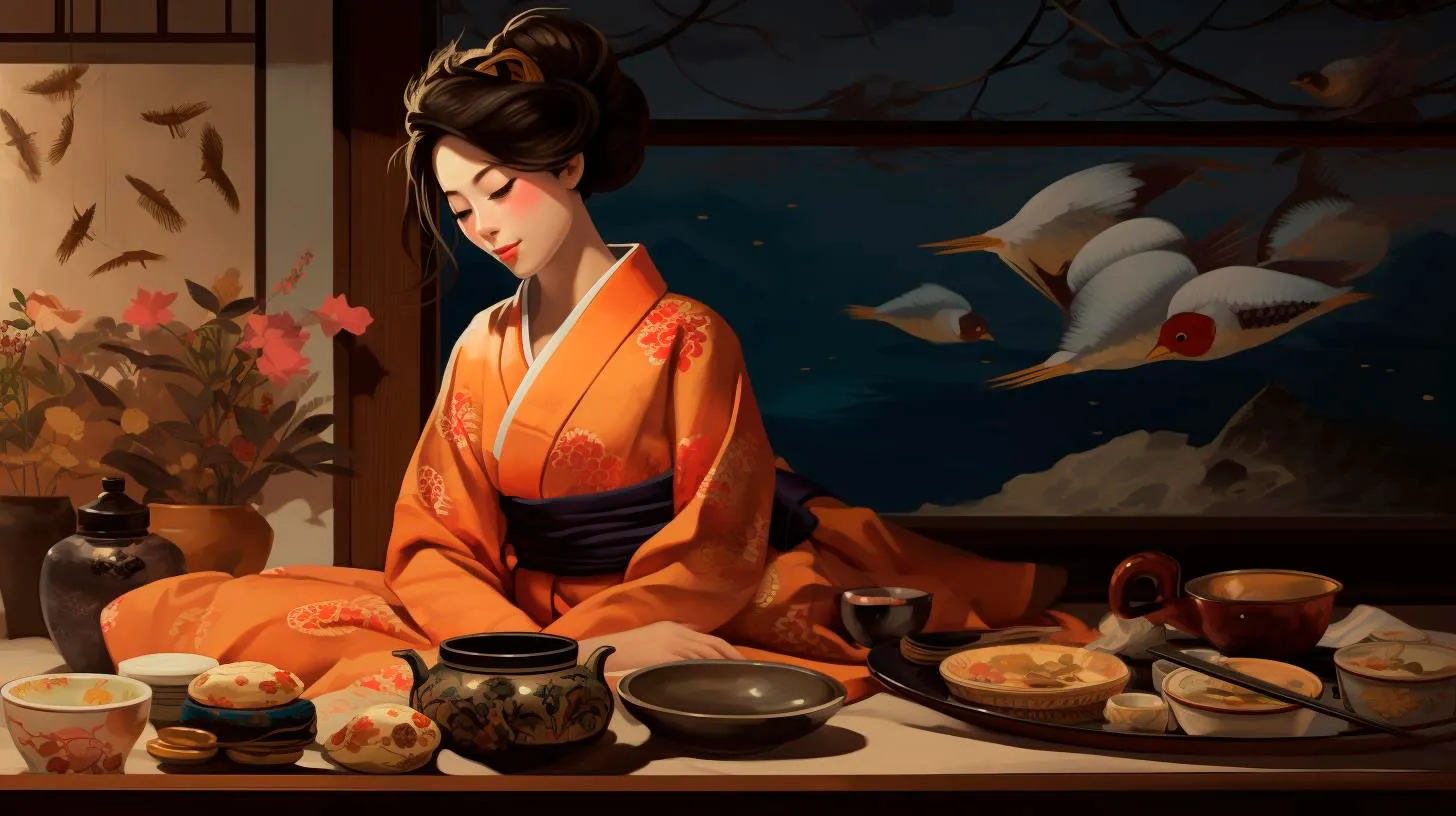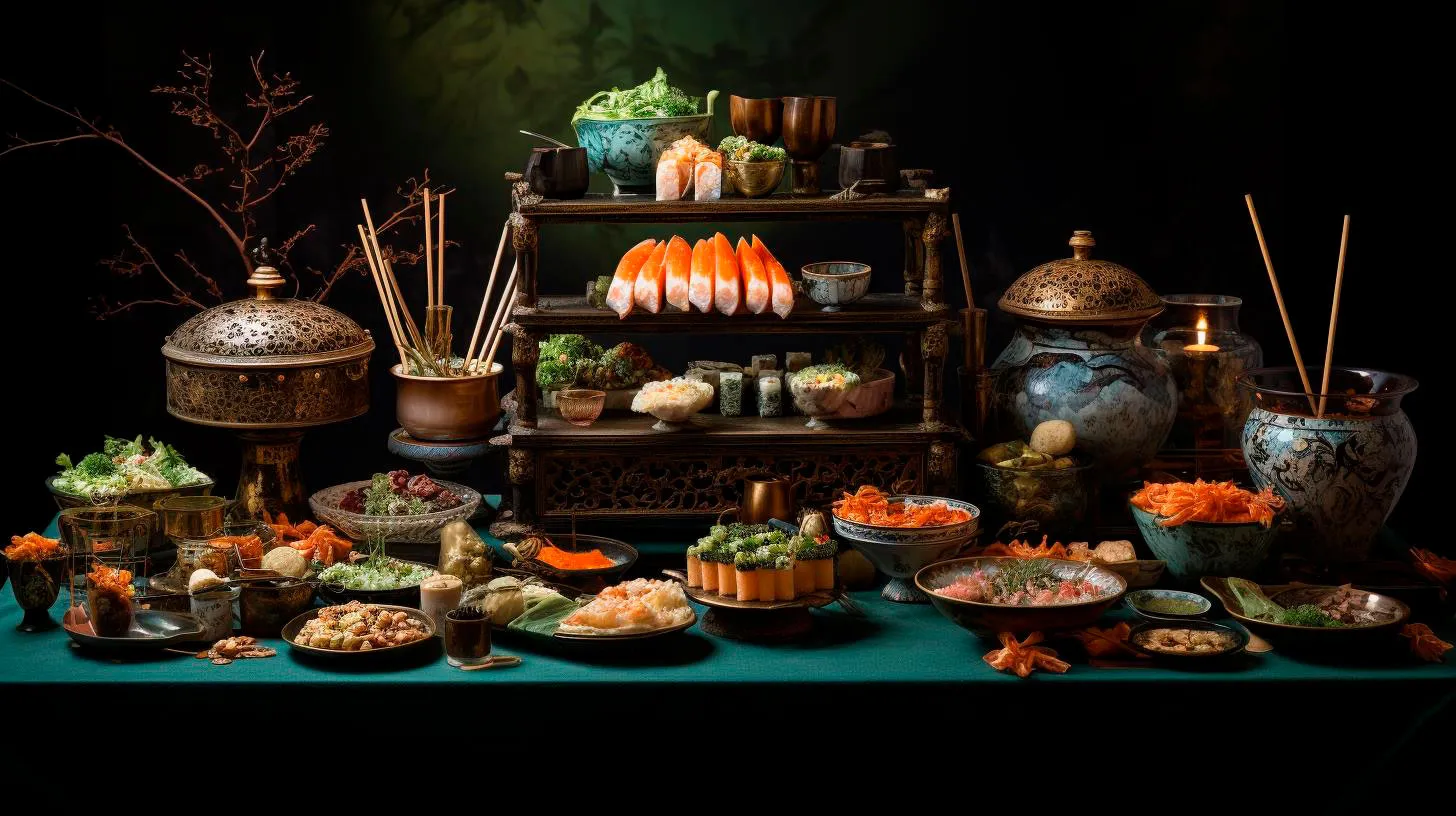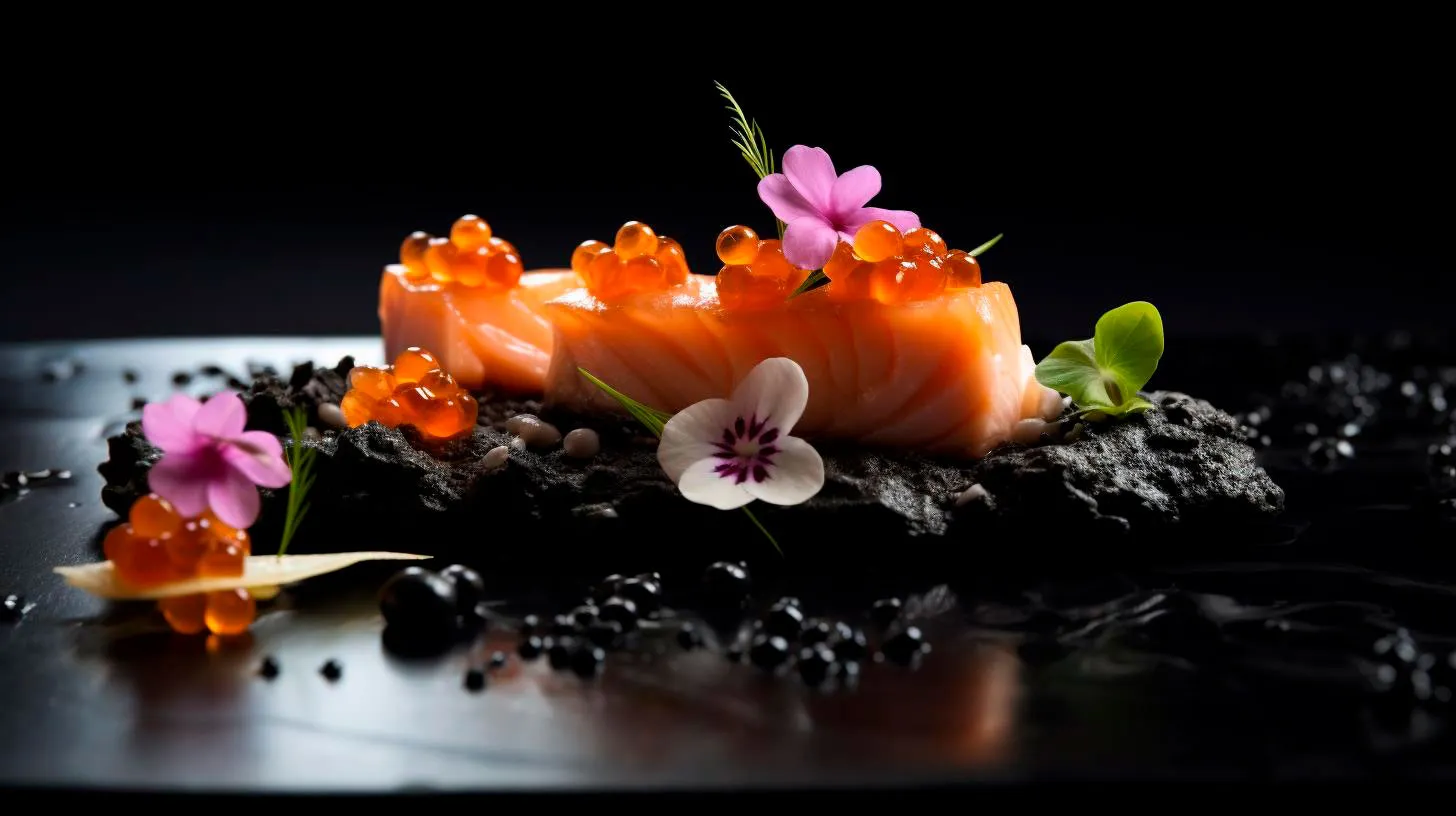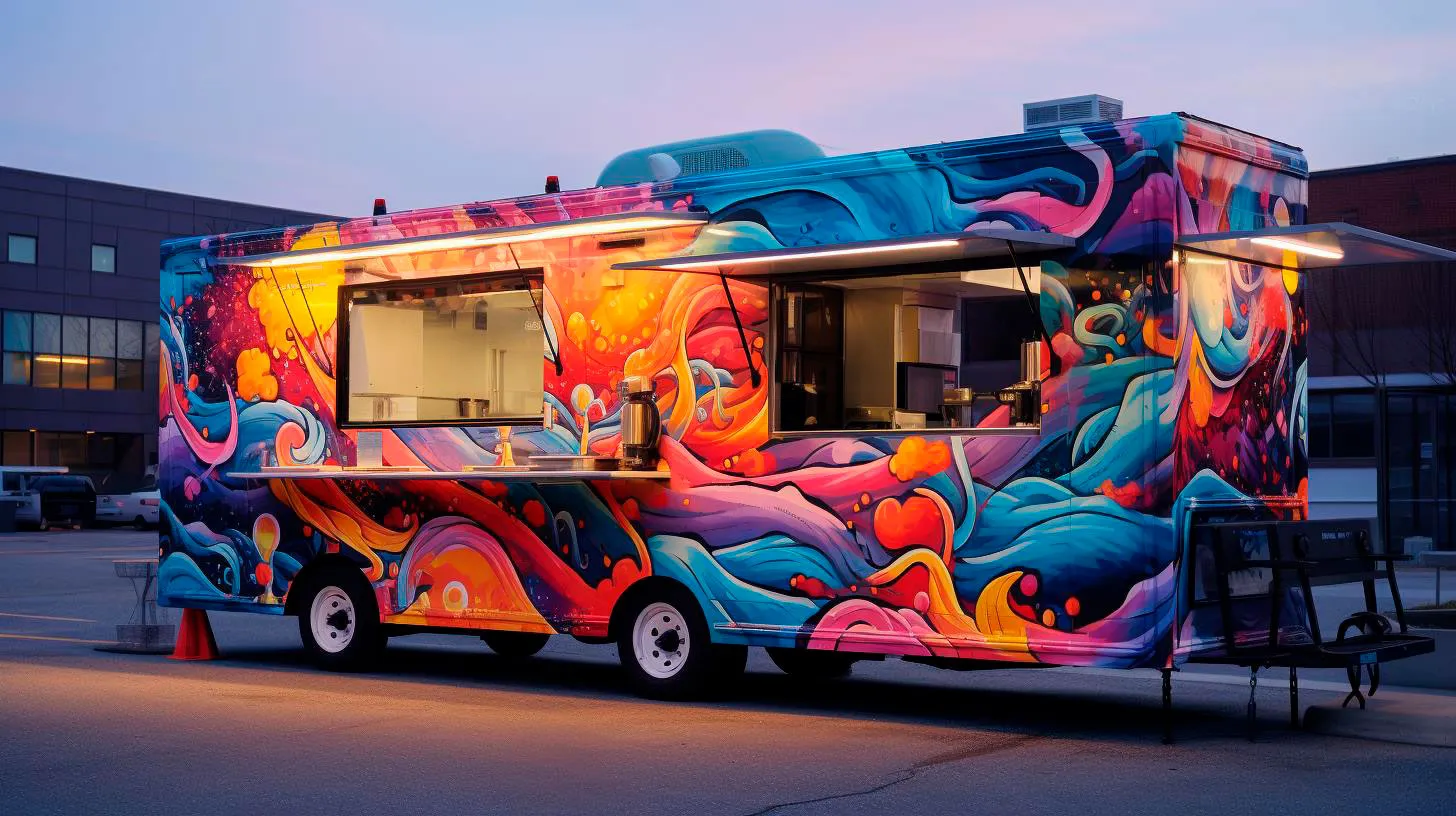Art on a Plate: Unleashing Creative Possibilities through Sushi Photography
In this article, we delve into the unique fusion of art and gastronomy, exploring how sushi photography has opened up new avenues for creative expression.
Visual Delights of Sushi Photography
When it comes to food photography, sushi takes the spotlight due to its vibrant colors, intricate designs, and meticulous presentation. By capturing these visually appealing culinary creations through the lens of a camera, sushi photography aims to evoke awe and appreciation for the artistry behind this Japanese delicacy.
Let’s explore some of the key features and advantages that sushi photography offers:
- Creative Imagery: Sushi photography allows artists to play with composition, lighting, and angles to create visually stunning images. From top-down shots showcasing the symmetry of sushi rolls to close-ups highlighting the delicate details, the possibilities are endless.
- Artistic Expression: Sushi photography provides a platform for photographers, chefs, and food enthusiasts to unleash their creativity. Through their lens, they can capture not only the physical aesthetics of the dish but also the emotions and stories behind it.
- Social Media Appeal: In the era of Instagram and food blogging, sushi photography has become incredibly popular. These visually striking images easily catch the attention of social media users, attracting likes, comments, and followers.
- Cross-Cultural Connection: Sushi is not only a culinary delight but also a cultural symbol. By beautifully capturing sushi through photography, individuals around the world can appreciate and connect with Japanese culture, even if they’ve never tasted sushi themselves.
Key Takeaways from Sushi Photography
Now that we’ve delved into the art and aesthetics of sushi photography, let’s take a closer look at some key takeaways:
1. Culinary Creativity
Sushi photography serves as a catalyst for culinary creativity. Chefs and home cooks alike can experiment with colorful ingredients, inventive presentations, and unique plating techniques. By pushing boundaries, they can create sushi that appeals not only to the taste buds but also to the eyes.
2. Branding and Marketing
Restaurants and sushi chefs can leverage the power of sushi photography as a powerful marketing tool. Eye-catching images shared on websites and social media platforms can entice potential customers to visit their establishments, indulge in their culinary delights, and share their experiences with others.
3. Cultural Appreciation
Through sushi photography, individuals from different cultures can learn about and appreciate Japanese cuisine and traditions. It serves as a visual bridge, allowing people to experience a taste of Japan from wherever they are in the world.
4. Food Blogging and Influencing
Sushi photography has captured the attention of food bloggers and influencers. By showcasing aesthetically pleasing sushi creations, these individuals can attract a wide audience and inspire others to explore their culinary passions.
Statistics Reflecting the Trend
To further illustrate the growing popularity of sushi photography, let’s explore some relevant industry statistics:
- According to Instagram, the most popular sushi hashtags, such as #sushi and #sushilove, have accumulated over 20 million posts combined.
- A survey conducted by Food Network found that 67% of participants admitted to taking pictures of their food before eating, emphasizing the visual appeal of cuisine in today’s digital age.
- In 2020, Pinterest witnessed a 55% increase in searches related to sushi recipes and sushi photography, indicating a rising interest in this niche.
Unleashing Your Creativity
Now that we’ve explored the world of sushi photography, it’s time for you to unleash your creativity and capture stunning visuals of your culinary creations. Whether you’re a professional food photographer, an aspiring chef, or simply a sushi enthusiast, embrace this fusion of art and gastronomy and create your own artistic masterpieces via sushi photography.
Remember, sushi photography is not just about taking pictures of food; it’s a celebration of flavors, textures, colors, and culture. So, grab your camera, pay attention to the details, and embark on a visual journey that will transport your viewers to the captivating world of sushi.
Sushi as a Visual Feast: Elevating Culinary Photography with Expert Tips
In the era of social media and food blogs, taking captivating photographs of sushi has become an art form in itself. In this article, we will explore expert tips that will help you elevate your culinary photography skills and capture the essence of sushi in visually stunning images.
The Importance of Presentation
When it comes to sushi photography, presentation is key. The visual appeal of sushi lies in its symmetrical arrangement, vibrant colors, and meticulous details. To capture the essence of this art, here are some expert tips:
- Use a plain, neutral background to let the sushi take center stage
- Experiment with different plating techniques to add depth and visual interest
- Highlight the intricate details of each sushi roll by shooting from different angles
- Play with lighting to create shadows and highlights that enhance the texture and shape of the sushi
By paying attention to these details, you can create visually compelling sushi photographs that truly showcase the artistry behind this beloved cuisine.
Key Elements of Lighting
In culinary photography, lighting is crucial to creating a captivating image. When capturing sushi, consider the following lighting techniques:
- Use natural light whenever possible, as it brings out the true colors of the sushi
- Avoid direct, harsh lighting that can wash out the details of the sushi
- Experiment with diffused lighting or softboxes to create a gentle, even illumination
- Play with shadows to add depth and dimension to your photographs
A well-lit sushi photograph can evoke a sense of freshness and delectability, making the viewer crave a bite of this delightful dish.
Composition and Styling
In order to create visually stunning sushi photographs, consider the following composition and styling tips:
- Follow the rule of thirds to create a balanced and pleasing composition
- Experiment with different angles and perspectives, such as overhead shots or close-ups on individual sushi rolls
- Incorporate complementary elements, such as chopsticks, soy sauce dishes, or wasabi, to add context and interest to the image
- Consider the color palette and arrange sushi rolls with complementary colors to create a visually appealing composition
By paying attention to composition and styling, you can create visually stunning photographs that will leave your audience salivating.
Post-Processing Techniques
Post-processing is an essential step in enhancing your sushi photographs. Consider these expert tips:
- Adjust the white balance to ensure the colors of the sushi are accurate
- Enhance the details and textures of the sushi through selective sharpening
- Use curves or levels adjustments to fine-tune the exposure
- Experiment with color grading to create a unique look that suits the style of your photographs
By applying these post-processing techniques, you can enhance the visual impact of your sushi photographs and create images that truly stand out.
The Power of Sushi Photography
Aside from being a visual feast, sushi photography has become a powerful tool in marketing and promoting culinary experiences. Here are some key takeaways:
- Captivating sushi photographs can attract more customers to your restaurant or sushi bar
- Strong visuals can elevate your brand’s online presence and social media engagement
- Sushi photography can be a source of inspiration for aspiring chefs and food enthusiasts
- Sharing your sushi photography tips and tricks can help build a strong community of culinary photographers
Ultimately, sushi photography allows us to savor the beauty of this culinary art form and share it with the world.
Inspiring a Captivating Culinary Journey
Sushi, with its intricate details and vibrant colors, has become a visual feast that captivates our senses and brings joy to our culinary experiences. By following expert tips in presentation, lighting, composition, and post-processing, you can elevate your sushi photography skills and create visually stunning images that truly showcase the artistry behind this beloved cuisine. Let your photographs inspire others to embark on a captivating culinary journey filled with the taste and beauty of sushi.
Behind the Scenes Exploring Lighting and Composition in Sushi Photography
Why Lighting Matters in Sushi Photography
Lighting is one of the most crucial elements in photography. When it comes to sushi photography, proper lighting can make all the difference in capturing the true essence and beauty of the dish. Here are a few reasons why lighting matters:
- Highlighting Textures and Colors: Well-lit sushi brings out the vibrant colors and textures of the ingredients, making them stand out. This helps create an appetizing image that entices the viewer.
- Setting the Mood: Different lighting styles can evoke different moods in your sushi photography. Soft, diffused lighting can create a calm and serene atmosphere, while dramatic lighting can add excitement and depth.
- Enhancing Three-Dimensionality: Proper lighting techniques can add depth and dimensionality to the photograph, making the sushi appear more three-dimensional and realistic.
To achieve optimal lighting in sushi photography, it is essential to understand the different lighting techniques and equipment available:
- Natural Lighting: Utilize natural light sources such as sunlight or a nearby window. Natural light provides a soft and flattering illumination that enhances the overall look of the sushi.
- Artificial Lighting: Using artificial lights such as studio lighting or LED panels allows for greater control over the lighting conditions. This is especially useful when shooting indoors or in low-light environments.
- Diffusers and Reflectors: Diffusers help soften the harshness of the light, while reflectors bounce light onto specific areas, reducing shadows and adding highlights.
The Art of Composition in Sushi Photography
Composition plays a vital role in sushi photography, as it determines how all the elements within the frame come together to create an aesthetically pleasing image. Follow these guidelines to master the art of composition:
- Rule of Thirds: Divide your frame into a grid of nine equal parts using two horizontal and two vertical lines. Place the main focal point, such as the sushi roll or the ingredients, along these lines or at the intersections to create a visually appealing composition.
- Leading Lines: Utilize leading lines, such as chopsticks or lines on the sushi board, to guide the viewer’s eye towards the main subject. This helps create a sense of movement and adds visual interest.
- Negative Space: Leave some empty space around the sushi to give a sense of minimalism and focus on the main subject. This helps create a visually balanced composition.
- Angles and Perspectives: Experiment with different angles and perspectives to add variety to your sushi photography. Shoot from above, below, or at eye level to discover unique and captivating shots.
Key Takeaways from Behind the Scenes of Sushi Photography
Now that we’ve explored the importance of lighting and composition in sushi photography, let’s recap the key takeaways:
- Proper lighting brings out the vibrant colors, textures, and three-dimensionality of sushi.
- Understanding different lighting techniques and equipment is crucial in achieving optimal results.
- Composition techniques such as the rule of thirds, leading lines, negative space, and varied angles can enhance the overall appeal of sushi photography.
Remember, practice makes perfect. Challenge yourself to experiment with different lighting setups and compositions to develop your unique style as a sushi photographer. With dedication and creativity, you’ll be able to capture stunning sushi shots that will leave your audience craving for more!
Capturing the Essence: Mastering Photographic Techniques for Vibrant Sushi Shots
To truly capture the essence of this delectable cuisine, mastering the right photographic techniques is crucial. In this article, we will explore some tips and tricks to help you elevate your sushi photography game to new heights.
1. Lighting: Set the Stage for Brilliance
In food photography, lighting plays a crucial role in enhancing the visual impact of the subject. When photographing sushi, natural light is your best friend. Look for a well-lit area near a window or a spot where diffused light illuminates the scene. Avoid harsh overhead lighting or direct sunlight, as it can create unsightly shadows or wash out the vibrant colors of the sushi.
Some key takeaways for lighting your sushi shots:
- Opt for natural light to highlight the beauty of the dish.
- Avoid harsh lighting that can create unappealing shadows.
- Experiment with diffused lighting techniques for a softer and more flattering effect.
2. Composition: Mastering the Art of Arrangement
Creating an appealing composition is essential when photographing sushi. The arrangement of the sushi pieces, props, and background all contribute to capturing the essence of the dish. Here are a few tips to keep in mind:
- Focus on the details: Highlight the textures and colors of the sushi by getting up close and personal.
- Experiment with different angles: Explore different perspectives to find the most visually interesting view.
- Utilize negative space: Leave empty areas to give focus to the sushi and allow it to shine.
By paying attention to composition, you can create visually stunning sushi shots that truly capture the essence of the dish.
3. Props and Background: Enhancing the Story
Choosing the right props and background can take your sushi photography from good to breathtaking. Go for minimalistic and complementary props that highlight the sushi rather than overpowering it. A simple wooden cutting board, a pair of elegant chopsticks, or a few drops of soy sauce can add visual interest without distracting from the main subject.
When it comes to the background, opt for neutral colors or textures that contrast with the colors of the sushi. A clean white background can create an elegant and minimalist aesthetic, while darker or textured backgrounds can add depth and visual intrigue.
Remember these useful prop and background tips:
- Choose props that enhance the story and complement the sushi.
- Experiment with different backgrounds to create contrasting effects.
- Avoid clutter and keep the focus on the sushi.
4. Editing: Polishing the Masterpiece
Post-processing your sushi shots can make a significant difference in the final result. Mild adjustments in brightness, contrast, and saturation can help enhance the vivid colors and details of the sushi. Editing tools like Adobe Lightroom or smartphone apps such as Snapseed offer a wide range of options for precise editing.
It is essential to strike the right balance between enhancing the image and maintaining its natural appeal. Remember, the goal is to showcase the sushi’s beauty, not to create an artificial-looking image.
Key Takeaways for Editing:
- Adjust brightness, contrast, and saturation subtly.
- Don’t overdo it – maintain the natural appeal of the sushi.
- Experiment with editing tools to find your unique style.
Incorporating these techniques into your sushi photography will allow you to capture stunning images that truly bring out the essence of this beloved cuisine. Practice, experiment, and let your creativity flow to develop your own style and signature shots. Remember, the most important thing is to enjoy the process and share the beauty of sushi through your lens!



